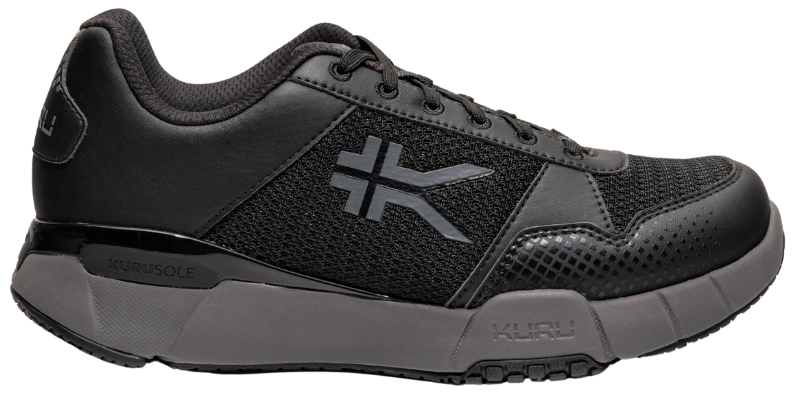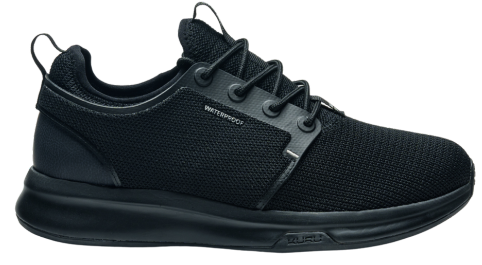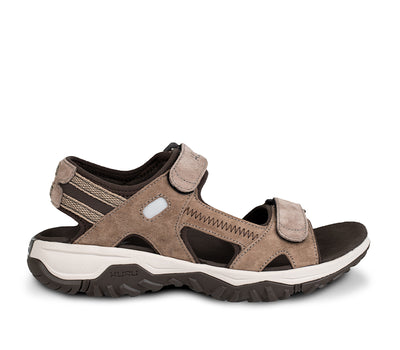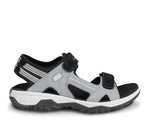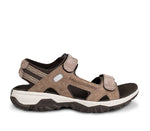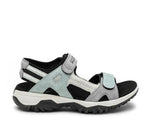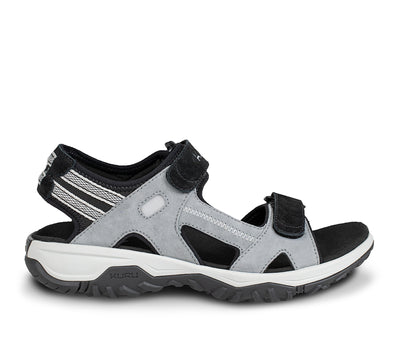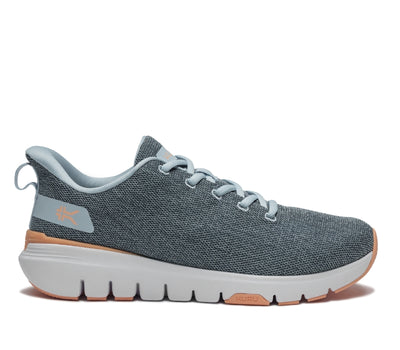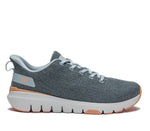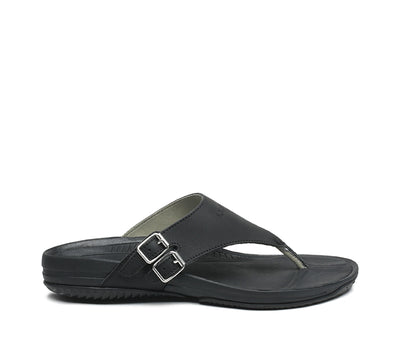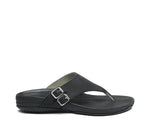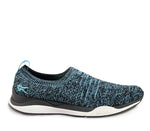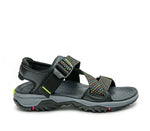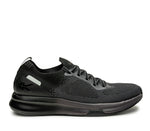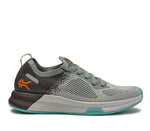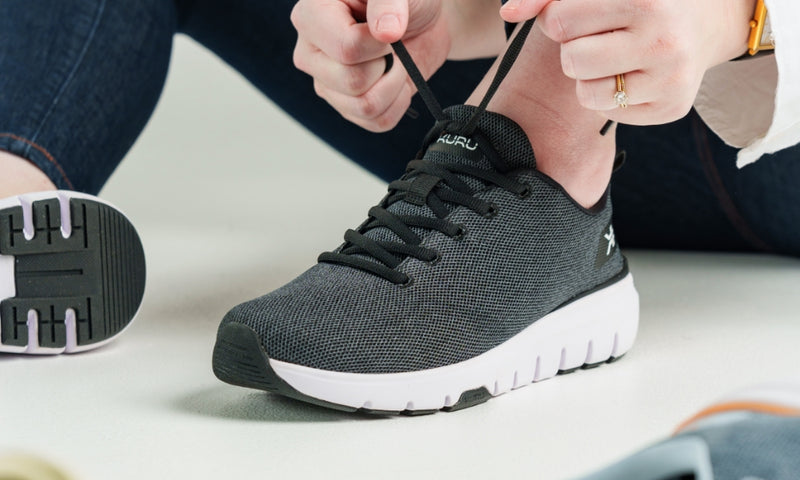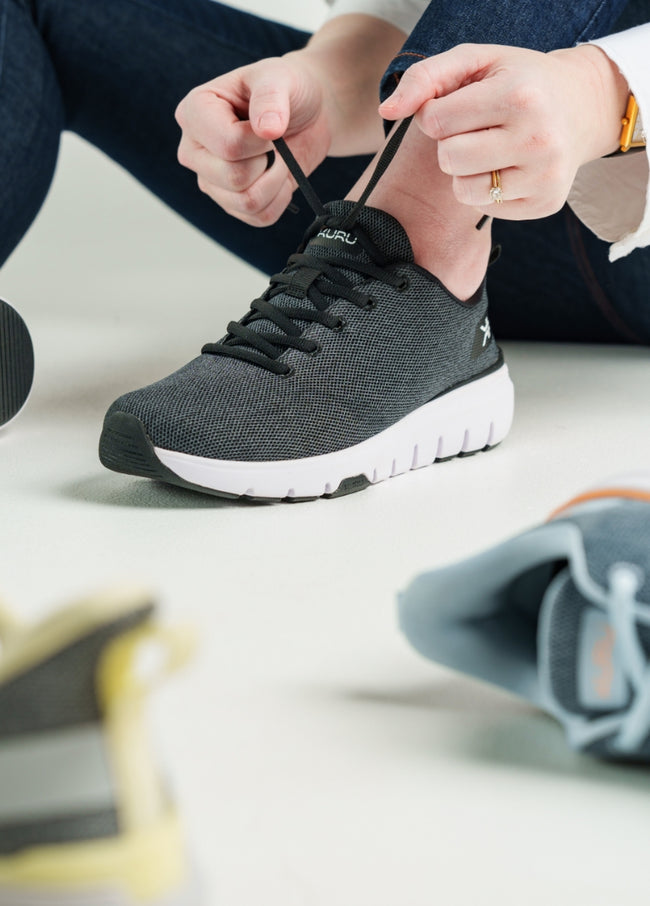Women's Shoes for Fibromyalgia
(32.1k reviews)
The best shoes for fibromyalgia sufferers can help reduce that pain and help you stay active. The hard, unforgiving surfaces we walk on punish our feet—causing tension, swelling and pain in the muscles and joints. Most of the shoes we wear are flat inside, which makes the problem worse.
Every pair of KURUs includes our special, patented technology called KURUSOLE. This tech dynamically flexes and hugs your heels to fully support your entire foot—leading to better foot health and pain relief from conditions like plantar fasciitis.
Our KURUCLOUD midsole is built with lightweight, shock-absorbing EVA foam to diffuse impact with every step. Lastly, ULTIMATE INSOLES are our advanced, contoured insoles that mold to your feet over time for the perfect custom fit.
All three layers of KURU technology add up to the best shoes for chronic pain.
Features of Women's Shoes for Fibromyalgia
For women with fibromyalgia, wearing supportive shoes can help manage pain and make it easier to move around. Below are some important features to look for in the best shoes for fibromyalgia foot pain.
- Cushioning and Shock Absorption. Good cushioning reduces the impact on your feet and joints, helping to ease pain. Wearing shoes with premium foam insoles can absorb shocks and make walking more comfortable.
- Arch Support. Proper arch support helps distribute your weight evenly across your feet, reducing strain on muscles and ligaments. Shoes that can fit custom orthotic inserts are beneficial.
- Lightweight Construction. Heavy shoes can make you feel more tired. Lightweight shoes are easier to walk in and help you stay physically active without worsening your symptoms.
- Wide Toe Box. A wide toe box allows your toes to spread naturally and reduces pressure on the front part of your feet. This can help prevent discomfort and accommodate any swelling.
- Adjustable Fit. The best women’s walking shoes for fibromyalgia have adjustable straps or laces let you customize the fit. This is important for managing changes in foot size and shape due to swelling or other symptoms.
- Soft, Breathable Materials. Shoes made from soft, flexible materials can prevent irritation and blisters. Breathable fabrics keep your feet cool and dry, reducing the risk of infections.
- Low Heel. Low-heeled shoes provide stability and reduce strain on your lower back and legs. A heel height of no more than one inch is recommended for comfort and balance for fibromyalgia heel pain.
- Anti-Slip Soles. Anti-slip soles provide better grip and stability on different surfaces, helping to prevent slips and falls, which is important for people with fibromyalgia.
- Easy on and Off. Shoes that are easy to put on and take off are important if you have difficulty bending or pain in your hands and fingers. Slip-on designs or shoes with simple fastenings can be very helpful.
By choosing a pair of shoes with these features, women with fibromyalgia and foot pain can find comfort and support, helping them stay active and manage their symptoms better.
Women's Shoes for Fibromyalgia - List of products
Discover Your Personalized Shoe Recommendations
Register to receive a notification when this item comes back in stock.
Common Causes of Fibromyalgia in Women
Fibromyalgia is a chronic condition that causes widespread pain, fatigue, and tenderness. While the exact cause is unknown, several factors are believed to contribute to its development, especially in women. Here are some common causes:
- Genetics. Fibromyalgia often runs in families, suggesting a genetic link. If a close family member has fibromyalgia, your risk of developing it increases. Certain genes may affect how the brain processes pain, making some people more likely to get fibromyalgia.
- Infections. Some infections might trigger fibromyalgia or make its symptoms worse. Viral infections, like the Epstein-Barr virus, and bacterial infections, like Lyme disease, have been linked to the start of fibromyalgia symptoms in women.
- Physical or Emotional Trauma. Traumatic events can trigger fibromyalgia. Physical trauma, such as injuries from accidents, and emotional trauma, like the loss of a loved one or major life changes, can lead to the development of fibromyalgia.
- Stress. Chronic stress is a major factor in developing fibromyalgia. Long-term stress can change how the brain and nervous system work, affecting how the body feels pain and leading to chronic pain conditions like fibromyalgia.
- Hormonal Imbalances. Women are more likely to develop fibromyalgia than men, suggesting that hormones may play a role. Imbalances in hormones like cortisol and estrogen can influence pain sensitivity and stress responses.
- Sleep Disorders. Poor sleep quality and sleep disorders, like sleep apnea and restless leg syndrome, are common in people with fibromyalgia. Lack of good sleep can make pain and fatigue worse, contributing to the development and worsening of fibromyalgia symptoms.
Effective Ways to Reduce and Treat Fibromyalgia
Managing fibromyalgia requires a combination of treatments and lifestyle changes to reduce symptoms and improve quality of life. Here are some effective ways to reduce and treat fibromyalgia:
- Medication. Doctors may prescribe medications to help manage pain and improve sleep. Common options include pain relievers, antidepressants, and anti-seizure drugs, which can help reduce pain and improve sleep quality.
- Exercise. Regular, low-impact exercise like walking, swimming, or yoga can help reduce pain and improve mood. Exercise also helps increase strength and flexibility, which can alleviate some of the physical symptoms of fibromyalgia.
- Stress Management. Stress can worsen fibromyalgia symptoms, so managing stress is crucial. Techniques such as mindfulness, meditation, deep-breathing exercises, and progressive muscle relaxation can help reduce stress levels.
- Sleep Improvement. Improving sleep quality is vital. Maintaining a regular sleep schedule, creating a restful sleep environment, and avoiding caffeine and electronic devices before bed can help. Some people may benefit from sleep aids prescribed by a doctor.
- Healthy Diet. A balanced diet rich in fruits, vegetables, lean proteins, and whole grains can improve overall health and energy levels. Avoiding processed foods and reducing sugar intake can also help manage symptoms.
- Therapies. Physical therapy, occupational therapy, and talk therapy can be beneficial. Physical therapy can help improve movement and reduce pain, while talk therapy can help with coping strategies and mental health support.
